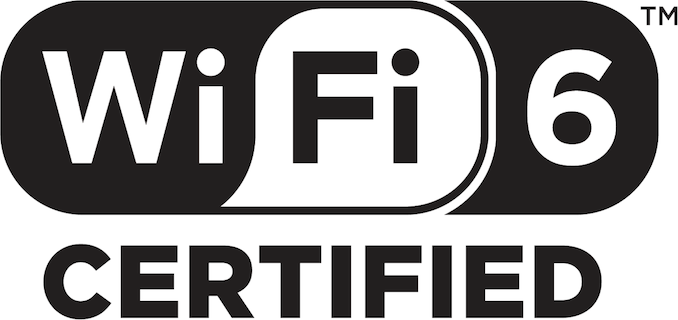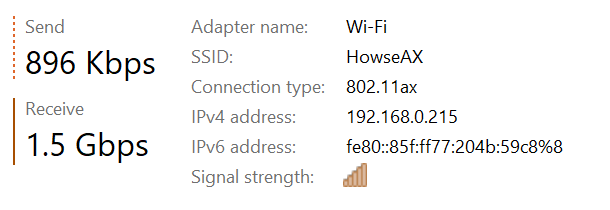AT 101: Wi-Fi 6 And Why You Want It
by Brett Howse on February 12, 2020 8:00 AM ESTTo The Future
If the question is do you need Wi-Fi 6, the answer is most assuredly “maybe”. The performance improvements are substantial, but really rely on a very strong signal to get the most data throughput. Most of the new features of Wi-Fi 6 focus on the influx of devices to the standard, and dealing with many devices connected to the same access point, or devices trying to share spectrum when connected to different access points.
The addition of Orthogonal Frequency Division Multiple Access to the Wi-Fi 6 standard will likely be the most impactful change to this revision. It will allow access points to carve up their channels into smaller slices, allowing more devices to communicate at the same time with less overhead. Each device will lose out on peak throughput, but the reduced latency should help a lot, especially in very dense environments. It should help with excessive overhead on the network layer when multiple devices are sending many small packets at once, which is a very common scenario, especially in an office or stadium situation.
Multi-User MIMO was in the Wi-Fi 5 specification as an optional implementation, and as such it did not really take off. Wi-Fi 6 should make this more prevalent, and also adds support to the MU-MIMO on the uplink, not just the downlink side. This will increase the capacity of access points for higher-speed use cases, but MU-MIMO did not get a lot of traction in Wi-Fi 5 so we will have to see how much adoption it gets in Wi-Fi 6.
The wider 160 MHz channels will offer significantly more throughput in the home environment, as we saw in our performance tests. As with the 1024-level QAM though, to see the biggest benefit you will need a strong signal. The vast majority of home networking is still limited to 1 Gigabit Ethernet, which puts Wi-Fi 6 into somewhat of an awkward spot, since it can transfer faster than most wired home networks, but even so, that is still a significant improvement over Wi-Fi 5 which would cap out around 600 Mbps on the best Wi-Fi adapters. If you work with a lot of large files, and you prefer to use Wi-Fi instead of the more consistent, yet cumbersome Ethernet, there’s still a nice boost to be had.
The future looks strong for Wi-Fi, and the Wi-Fi Alliance has made some excellent revisions to their standard to help improve Wi-Fi for the next generation of devices. As with any standards change, the impacts will not be seen right away. Both the access point, and the client need to be leveraging the new standard for the improvements to be noticeable. We’ve already seen the latest generation of smartphones start to offer Wi-Fi 6, and there’s been some movement in the PC space as well with Intel’s Project Athena. Anyone looking at a new router today should certainly opt for a Wi-Fi 6 model, but there’s likely not a major need for most people to move from Wi-Fi 5 access points right away. If you live in a heavily congested wireless area, the advantages of features like BSS coloring and Spatial Frequency Reuse should help out in those scenarios, but for people looking at purely performance, Wi-Fi 6 somewhat runs into a wall of its own making, since it can now transfer at over Gigabit speeds on a typical 2x2:2 connection. But who are we to question performance?












149 Comments
View All Comments
Samus - Thursday, February 13, 2020 - link
I have yet to see a residential media converter that has >1Gbps throughput, let alone >1Gbps port. I have AT&T Fiber here in Chicago and get 980Mbps\960Mbps from my Gigabit connection and it's mostly bragging rights...no sites, even my private torrent community, can actually feed my connection.Though that could be a limitation of the AT&T backend for residential service. I have no clients in the city with commercial gigabit connections so I have nothing to compare it too.
TheUnhandledException - Friday, February 14, 2020 - link
because in any realistic scenario you aren't going to hit 1 Gps data rate. The 160 MHz tests in the article are next to useless in anything but the most remote scenarios. While Wifi 6 with 160 channels and devices a few feet away can exceed 1 Gbps under any realistic scenario (80 MHz, 15 feet away, wall between device and ap) you are going to be in the 300 to 600 Mbps range.hescominsoon - Friday, February 14, 2020 - link
Because not many folks have multi-gig for their wan connections so the invested the money into a 2.5 gig lan port instead.valinor89 - Wednesday, February 12, 2020 - link
My usual question is, can the WIFI 6 advantages be of use if there are less advanced devices in the same network? It used to be that even if both the AP and Device support the highest standard as long as there exist other devices that use the same network that don't support the new features they end up not usable.haukionkannel - Wednesday, February 12, 2020 - link
Those devices that support Wi-Fi 6 does benefit even if there Also Are those older devices. The router can handle both / all types of trafic at the same time.5080 - Wednesday, February 12, 2020 - link
Make sure your router support DL OFDMA. Some WiFi 6 router need a firmware update to add OFDMA.Makaveli - Wednesday, February 12, 2020 - link
I'm also using an RT-AX88U on Merlin firmware i'm picking up a Galaxy S10 today which is has AX so will be testing that tonight.spamcops - Wednesday, February 12, 2020 - link
I dont want 802.11ax, I want 802.11ayhaukionkannel - Wednesday, February 12, 2020 - link
Just wait some years and you have it!spamcops - Thursday, February 13, 2020 - link
yep, that will be revolution!